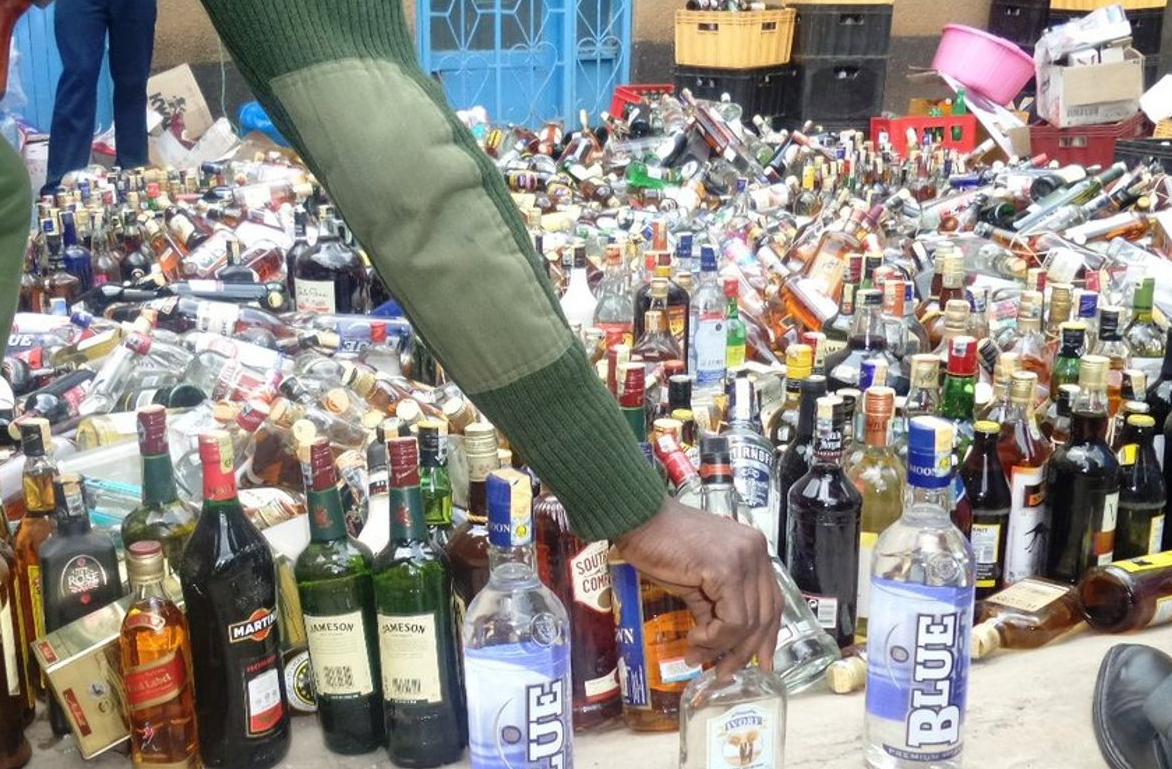
Alcohol manufacturers and distributors want excise tax on the key production ingredient further lowered for Kenya to tame illicit products mainly from neighbouring countries.
This follows the National Treasury's proposed cut on excise tax on undenatured Extra Neutral Alcohol (ENA) above 90 per cent strength supplied to licensed distilled alcohol manufacturers, from Sh964 per litre to Sh500.
The Finance Bill 2025 currently before Parliament also proposes a raft of other measures among them a shift in the excise regime on pure alcohol from ABV-based (Alcohol By Volume), to volume-based, and reducing the tax rate.
ENA, a colourless food-grade alcohol that does not have any impurities, is the primary raw material for production of a variety of alcoholic beverages, including vodka, gin and white rum.
In his 2025-26 Financial Year Budget speech last Thursday, Treasury Cabinet Secretary John Mbadi said the Excise Duty Act which provides for taxation of alcoholic beverages based on pure alcohol content, increased cost for producers using spirits over 90 per cent alcohol content as raw materials from Sh356 to about Sh1,000 per litre.
“Since undenatured extra neutral alcohol is a key input in the manufacturing of spirituous beverages, the Bill proposes to amend the Excise Duty Act to provide an excise duty rate of Sh500 per litre for undenatured extra neutral alcohol above 90 per cent strength, supplied to licensed spiritous beverage manufacturers,” Mbadi said.
Industry players however now say the proposed rate is still way above neighbouring countries, leaving Kenya exposed to a continued entry of cheaper illicit products and counterfeits mainly from Uganda and Tanzania.
Local production of fake alcohol and counterfeits is also fuelled by cheaper ethanol imports, according to industry players, with 60 per cent of alcohol sold in Kenya reported to be illicit.
Illicit products are those produced, distributed or sold illegally, with government missing out on revenues.
The proposed excise tax reduction in Kenya is still almost six times more than that charged on ethanol in Uganda, at Ush2,500 (Sh89.59), per litre.
Tanzania charges Tsh5,000 (Sh249.60) per litre of ethanol, which is half what Kenya has proposed.
“We appreciate the government's effort. However, the taxes charged on ethanol by both Tanzania and Uganda is very low, which will still encourage smuggling into Kenya,” the Alcoholic Beverages Association of Kenya (ABAK) chairman, Eric Githua, said.
ABAK is the industry umbrella body whose membership includes giant players such East African Breweries Limited, Kenya Wine Agencies Ltd, African Spirits. It also represents distributors and operators in the country’s alcohol space.
“Proposed excise rate for ENA is 5.6 times the Uganda rate thus reducing cash flow and making local manufacturing in Kenya uncompetitive. Further excise rate reduction will reduce the incentive for unscrupulous individuals from smuggling ethanol into Kenya, which has exacerbated the problem of illicit alcohol trade,” ABAK noted.
Kenya Association of Manufacturers (KAM) says the high taxes compared to Uganda and Tanzania are impacting Kenyan manufacturers’ cash flow and continue to promote illegal trading of ethanol, which has led to an increase in the sale of illicit alcohol.
This not only denies the government tax revenue but also harms businesses through unfair competition and poses health risks to consumers.
“Notably, the Tanzanian government, through the 2025 Finance Bill, seeks to reduce the current excise tax on local ethanol by 20 per cent. We urge the government to reduce the charges to Sh250 per litre, which will enhance our competitiveness and reduce the gap between Tanzania and Uganda,” KAM chief executive Tobias Alando said.
While the Sh250 per litre is still higher than Ugandan and Tanzanian rates, it will also increase government revenue and promote other value chains linked to alcohol, for instance, the sugar industry, KAM noted.
ABAK recently commissioned Euromonitor to conduct a study on illicit alcohol in Kenya, which indicated smuggling of ethanol has rapidly increased following the increase in excise duties for spirits (including ethanol). Ethanol is increasingly smuggled from Uganda.
According to the study, an estimated 81,455 hectolitres (8.14 million litres) of pure alcohol (seven per cent of illicit alcohol volume in Kenya) with a value of Sh23billion, with a fiscal loss of Sh9 billion for government, is imported into the country annually.
The study released last month was done with the support from government ministries, departments and agencies concerned with escalating problem of illicit alcohol in Kenya.
It revealed the government is losing about Sh120 billion annually in foregone taxes, mostly because of homemade brews and illegally made spirits.
The fiscal loss which has grown 68 per cent is mostly due to the artisanal brewing and illicit manufacturing of spirits mainly in Nairobi.
Most of the money lost by the government is because of tax leakage, about Sh73 billion, followed by counterfeit and fake brands, which cost an estimated Sh64 billion.
The study which was derived from product information from 50 different outlets across the country, store visits, interviews with staff and supply chain players, and online survey for 1,008 consumers, established that higher alcohol taxes are pushing more people toward cheaper, illegal options.
“The illegal options are powered by the smuggling of ethanol, which has increased, and the study also found that losses from smuggling alone have doubled since 2022,” Githua said.
The smuggling of ethanol increased, with the tax loss related to smuggling increasing by 144 per cent since 2022.
During the release of the study in Nairobi, Industry PS Juma Mukhwana said it establishes a good foundation for generating the policies and actions necessary to curb the production and sale of illicit liquor.
“As a government, we are keen on supporting such efforts to create an enabling environment for manufacturers to thrive,’’ Mukhwana said.
Consumers are mostly motivated to buy illicit alcohol because of its lower prices, accessibility through informal channels like street vendors and the desire for premium brands at lower costs, according to the study.









